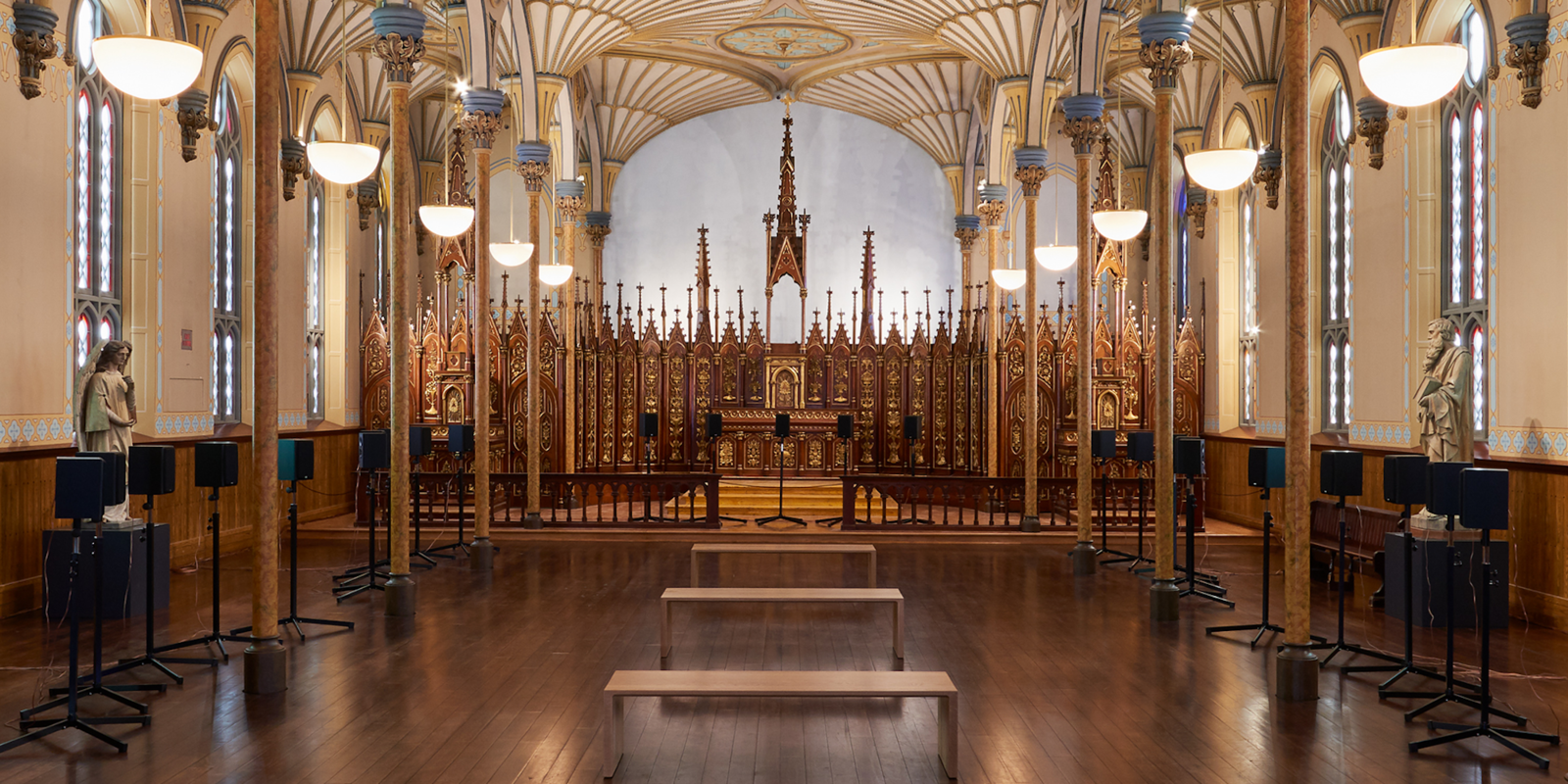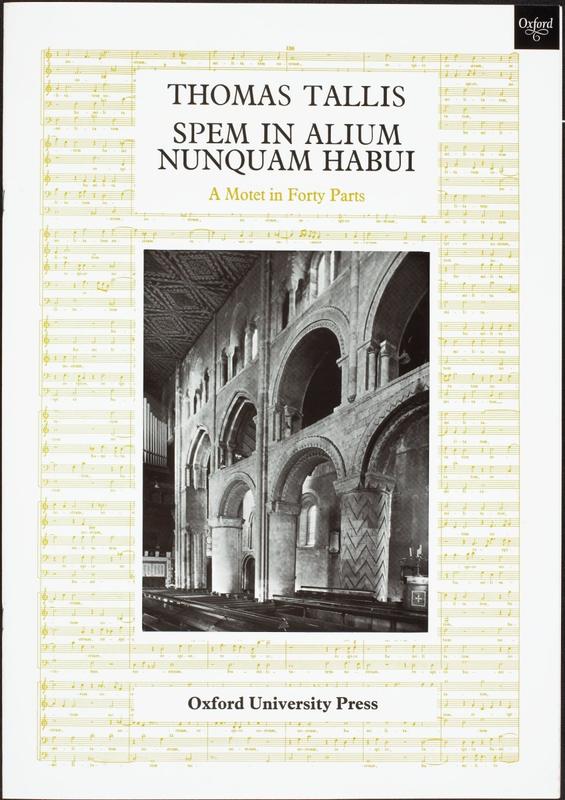More about Forty-Part Motet

Sr. Contributor
As far as contemporary art goes, The Forty-Part Motet makes a surprising amount of sense.
Sometimes, contemporary art is difficult and confusing. Sometimes, it makes you scratch your head and think, “Really? THAT’S art?” But not this piece. Janet Cardiff’s Forty-Part Motet is definitely not a tower of symbolic, broken cellos. It’s a sound installation and a beautiful reimagining of a forty-part choral piece from the Tudor era. You know, the time when Henry VIII was wreaking havoc on the English government. It was originally written by the composer Thomas Tallis, who titled it Spem in alium numquam habui, which translated to “In No Other Is My Hope.” Although the focus is on the sound, the piece is classified as a sculpture.
So how, exactly, is this contemporary art if it was written in 1573? Janet Cardiff’s desire to create a soundscape from the voices that come together to perform the motet (which, by the way, is just the fancy word for a short and complex piece written for choral singers) brought this work into the twenty-first century. She first heard a CD recording of Tallis’s masterpiece in 1998 and soon realized how she could rework a song that had remained the same for over four hundred years. Cardiff longed to hear the individual voices that made up larger entity, but this was impossible to do on a regular stereo. Her desire fueled the project, which came to fruition three years after first hearing it.
When you encounter the Forty-Part Motet in a museum, you see forty speakers arranged in a ring. Not a very riveting sight. But then you hear the angelic music emanating from the ring. Technology allows contemporary viewers to do what Tudor-era audiences couldn’t. You can stand in the middle of the forty speakers and experience all of the sounds at once, but you can also approach each speaker and listen to each part individually. Original choir members would have been pretty freaked out if people stood as close to them as they do with these speakers. Cardiff provides such an amazing way of understanding sixteenth-century music that the Forty-Part Motet was the first contemporary art piece to ever be on display at The Cloisters, where it played for three months in 2013. When it was on view at MoMA PS1, visitors reportedly burst into tears on a daily basis.
The speakers are arranged in eight groups of five speakers each, which is a shout out to Tallis’s original organization of the piece into five different choral ranges. Each speaker plays a part of the motet. Cardiff recruited singers from the Salisbury Cathedral Choir to stage her recording of Tallis’s song.
In her quest to recreate the song, Cardiff took some artistic liberties. She actually worked with more than forty people to make her dream a reality. Cardiff discovered that she preferred children’s voices, rather than women’s voices, for the song’s soprano part. Twenty-seven boys and girls joined thirty-two adult male singers for the modern recording. But wait a minute, Janet. That adds up to fifty-nine people for your forty-part motet...Post-production editors mixed the children’s soprano voices together to reduce the piece to its true forty parts.
Sources
- Cardiff, Janet, and George Bures Miller. “The Forty-Part Motet.” Installations. http://www.cardiffmiller.com/artworks/inst/motet.html. Accessed September 14, 2017.
- National Gallery of Canada. “Forty-Part Motet.” Collection. https://www.gallery.ca/collection/artwork/forty-part-motet. Accessed September 14, 2017.
- Tate. “Janet Cardiff.” Tate Shots. 7 July 2017. http://www.tate.org.uk/art/videos/tateshots/janet-cardiff. Accessed September 14, 2017.
- Tate. “Janet Cardiff.” Voices. http://www.tate.org.uk/visit/tate-modern/display/voices/janet-cardiff. Accessed September 14, 2017.
- The Metropolitan Museum of Art. “Janet Cardiff: The Forty-Part Motet.” Exhibitions. http://www.metmuseum.org/exhibitions/listings/2013/janet-cardiff. Accessed September 14, 2017.
- John Wray, “Janet Cardiff, George Bures Miller and the Power of Sound,” New York Times, July 26, 2012, http://www.nytimes.com/2012/07/29/magazine/janet-cardiff-george-bures-m…. Accessed September 14, 2017.












